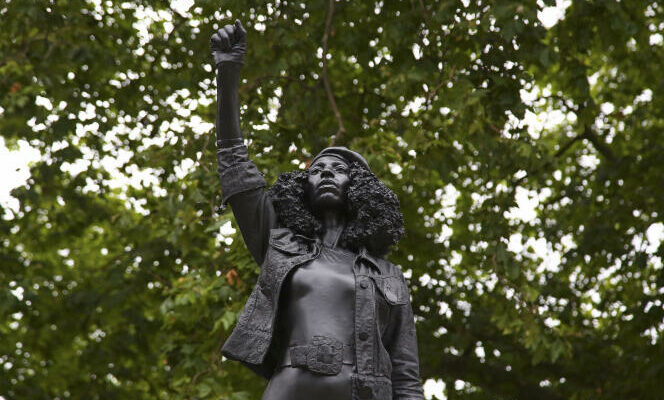Numbers. Icy lines precisely documenting the slave trade. The cost of boats. The price of insurance. Ports of departure and arrival of ships. “But slaves are never mentioned as human beings”, underlines Alexandre “Sasha” White, from John Hopkins University, who has just completed the study of the Lloyd’s archives and its slavery past. The sum of the documents decrypts the “commodification” of 12.5 million Africans forcibly sent across the Atlantic and considered as mere raw material.
It is to try to resist this dehumanizing coldness that Mr. White and his team wanted to call on a group of artists and writers to imagine these forgotten lives. The result is in a small book, Uprising and Resistance (Ink Sweat and Tears, 2023, untranslated), published alongside archival research. For lack of knowing more, this is a “critical fabrication”recognizes the book, produced under the direction of the British-Nigerian poet Gboyega Odubanjo, who suddenly died in August. “When history is lost, art and poetry take place”we can read in the work.
Thus, the British poet Keith Jarrett (no relation to the American musician) imagines a series of e-mails with caustic humor sent to Fermin de Tastet, the man who negotiated an insurance contract for the Gipuzkoaship carrying slaves. “This contract is… troubling?” Confusing ? I measure my words, blanco. I did some quick calculations. (…) Slaves “valued at 45 pounds each”. Honestly, Fermin, did you feel like you were getting a good deal? The total value of the boat estimated at a quarter of a million – it’s huge! But do you feel the thrill of your future (…) who places his hands on the earth that covers your grave, which tightens to demand accountability? »
“Give them back their dignity”
Illustrator Jess Nash has created three delicate paintings featuring Africans preparing to resist capture. “From the start of this project, I wanted to bring another story of enslaved people, to restore their dignity as much as possible”, she writes. Consulting the Lloyd’s archives, she was particularly struck by the numerous slave rebellions on ships, coldly listed in the registers.
“So many enslaved people fought, in strategic resistance, and it became the focus of my attention. » She thus paints three Africans gathered on a beach, to discuss preparations in the event of an attack by settlers; it then shows a cook, who learns to slip poison into food to possibly trap a crew who would capture her; she finally draws a “kroomen rescue operation”named after those sailors who carried out operations against slavery ships.
You have 15% of this article left to read. The rest is reserved for subscribers.
